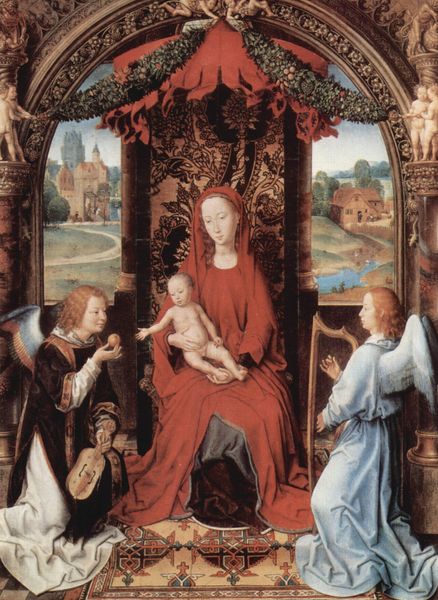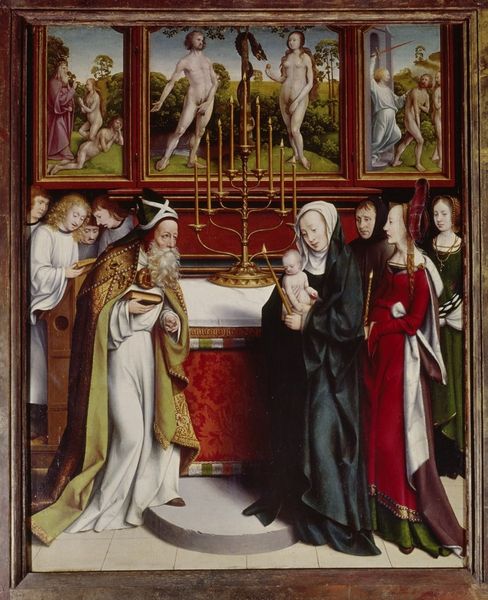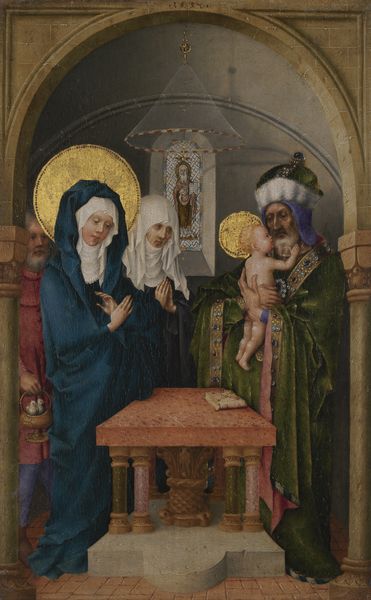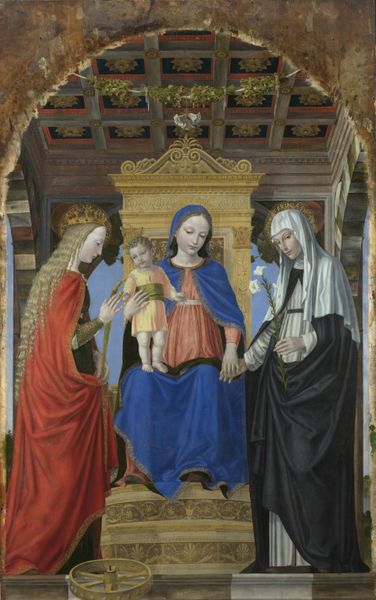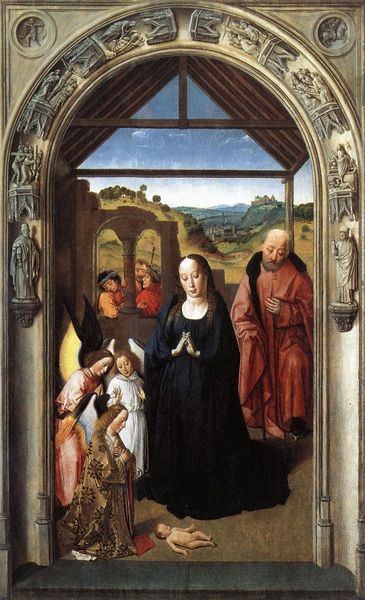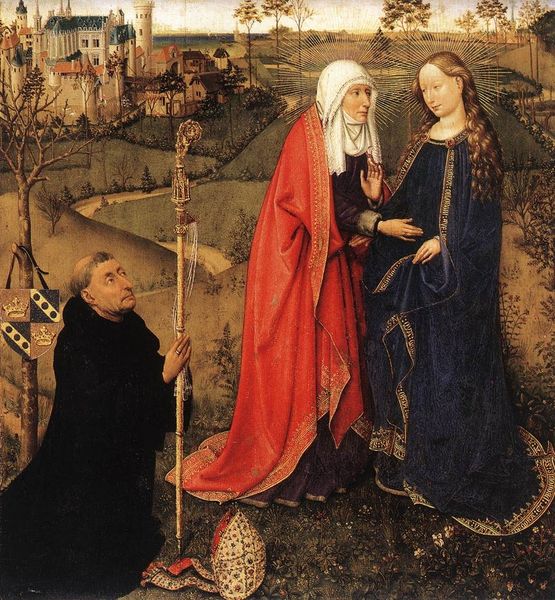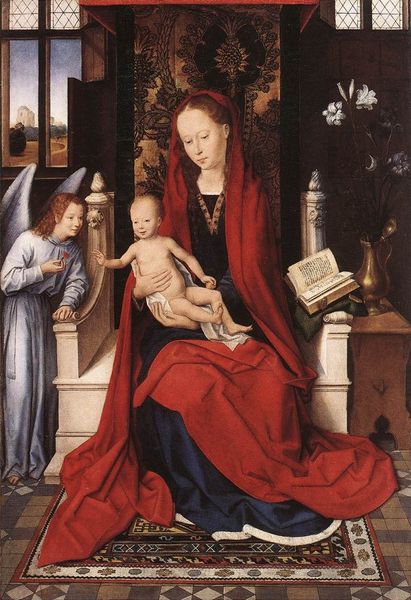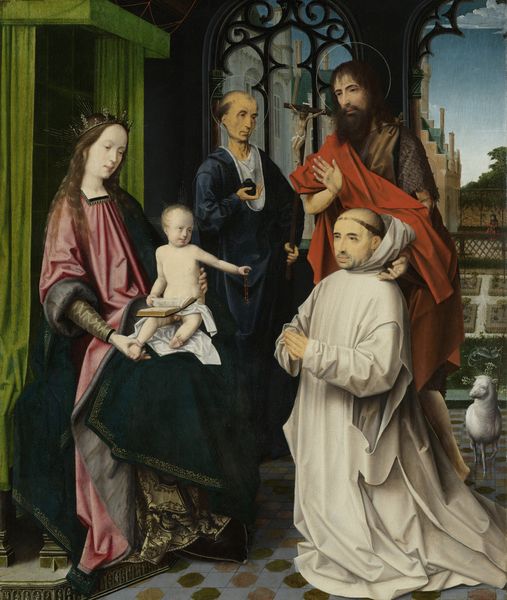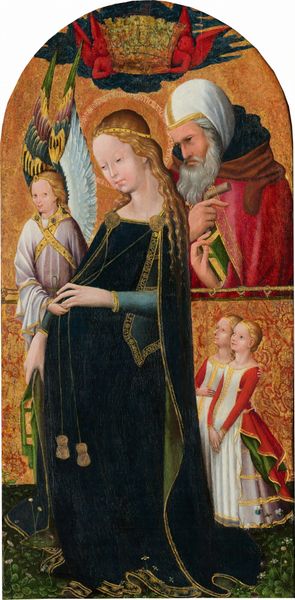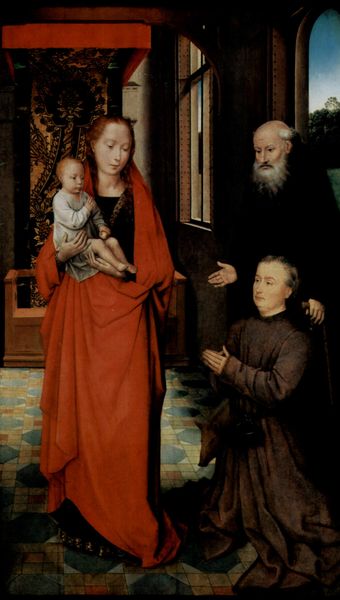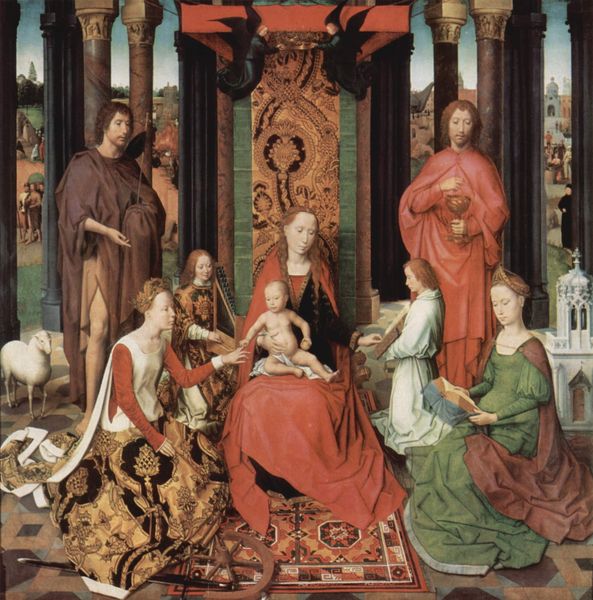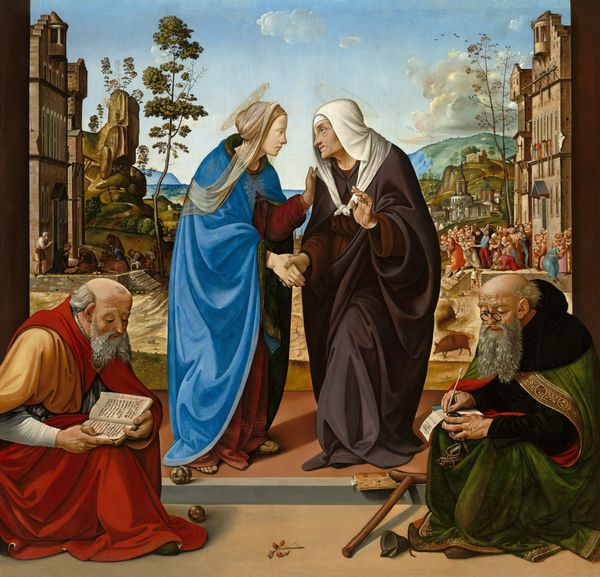
panel, painting, oil-paint
#
portrait
#
panel
#
painting
#
oil-paint
#
child
#
costume
#
group-portraits
#
christianity
#
history-painting
#
northern-renaissance
Copyright: Public domain
Curator: Jan van Eyck's "Virgin and Child with Saints and Donor", crafted in 1441 using oil paint on panel, is a fascinating example of Northern Renaissance portraiture here at the Frick. What’s your initial read? Editor: Immediately, I'm struck by the…stiffness? Everyone seems posed, almost like elaborate chess pieces. And that otherworldly light! Curator: Precisely. Note how the composition is structured. Van Eyck positions the Virgin Mary centrally, flanked by saints and the donor. This symmetry creates a balanced, almost architectural feel, wouldn't you agree? The implied lines of sight, connecting each figure, reinforce the painting’s cohesive structure. Editor: Totally. That red cloth behind Mary really pops. Also, is it me or does that child look older than an actual infant? Curator: It's the Byzantine influence, depicting Christ as a miniature adult, symbolic of his divine wisdom. The intense detail—observe the intricate patterns on Mary's robe or the individual strands of hair—showcases van Eyck's mastery of oil paint. The realism here is almost uncanny. Editor: I’m more drawn to that cityscape in the background; the light almost makes it sparkle. You’ve got a sacred scene unfolding but just a sliver of earthly delight peaking in behind. Curator: The backdrop isn't just decorative. These symbolic backgrounds represent celestial and earthly realms in balance. It also serves to connect the sacred figures with the real, temporal world of the donor. What do you make of the figures’ psychological state? Editor: Serious. Contemplative. Nobody's cracking a smile, which I suppose fits the piety of the scene. It's intense, sure, but, almost feels, distant in some weird way. Curator: Indeed, that detachment is crucial to understanding its purpose: a visual prayer, a plea for divine favor, immortalized through van Eyck’s brilliant artistry. A meditation made material, almost. Editor: Exactly, and maybe that's what sticks with me now—that mix of divine presence and very earthly appeal from all those lovely fabrics. Curator: It is indeed a synthesis that the artist achieves; the formal arrangement emphasizes a harmony not often achieved even by other great painters of his time. Editor: Thanks for unpacking all this—I see a whole other painting in what had just been a fancy, if slightly icy, religious portrait!
Comments
No comments
Be the first to comment and join the conversation on the ultimate creative platform.
